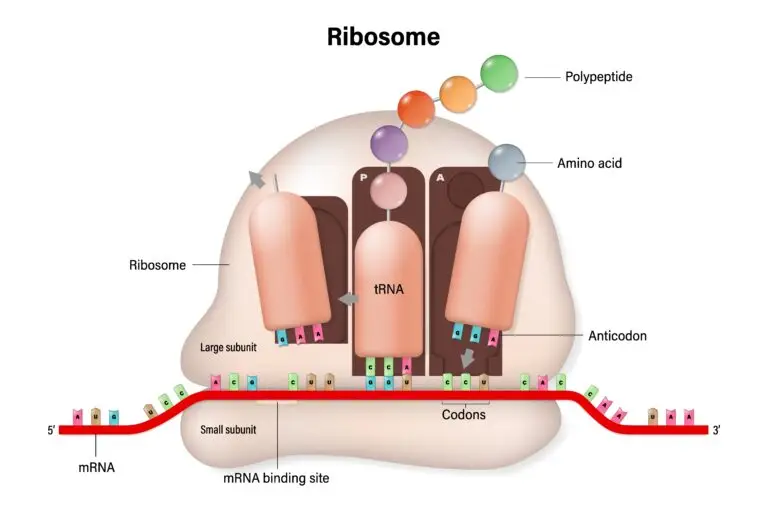Translation

Table of Contents
What is Translation?
Translation is the biological process in the ribosomes where the information carried by messenger RNA (mRNA) is used to synthesize a corresponding protein. This process is a key step in gene expression and is essential for synthesizing functional proteins that carry out various cellular functions.
Steps of Translation
Ribosome Binding
Translation begins with binding the ribosome’s small subunit to the mRNA molecule. The ribosome moves along the mRNA until it reaches the start codon.
Initiation of Protein Synthesis
The start codon (usually AUG) signals the initiation of protein synthesis. A transfer RNA (tRNA) molecule carrying the amino acid methionine binds to the start codon.
Elongation
During elongation, additional tRNA molecules bring amino acids to the ribosome. Each tRNA has an anticodon that base pairs with the complementary codon on the mRNA. The ribosome catalyzes the formation of peptide bonds between adjacent amino acids, forming a growing polypeptide chain.
Translocation
After each peptide bond formation, the ribosome moves along the mRNA, shifting to the next codon. This process is known as translocation.
Termination
Translation continues until a stop codon is reached on the mRNA. Stop codons (UAA, UAG, or UGA) do not code for amino acids but signal the end of protein synthesis. Release factors bind to the stop codon, causing the ribosome to release the completed polypeptide chain.
Components Involved in Translation
mRNA (Messenger RNA)
Carries the genetic information from DNA to the ribosome. The sequence of codons on mRNA specifies the sequence of amino acids in the polypeptide chain.
tRNA (Transfer RNA)
Molecules that carry amino acids to the ribosome. Each tRNA has an anticodon that base pairs with a complementary mRNA codon.
Ribosome
The ribosome is a complex structure composed of two subunits (small and large). It facilitates the binding of mRNA and tRNA, catalyzes peptide bond formation, and moves along the mRNA during translation.
Amino Acids
Building blocks of proteins. tRNA molecules bring specific amino acids to the ribosome, where they are incorporated into the growing polypeptide chain.
Release Factors
Proteins that bind to the stop codon, leading to the termination of translation and the release of the completed polypeptide chain.
Related Links
Genetic Code
Overview of DNA
Protein
RNA